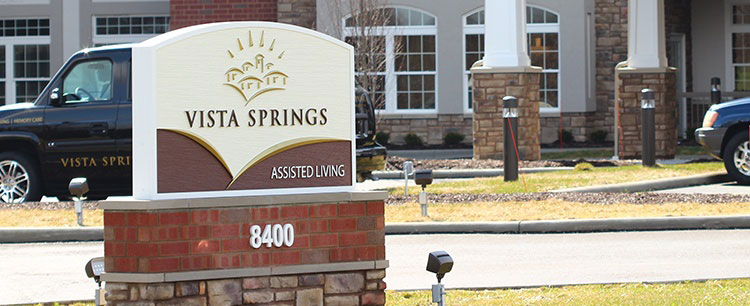When choosing an assisted living facility for a loved one, many family members simply look inside the facility to the activities, quality of care and aesthetics of the building. And, while this is important, the surrounding community, activities, transportation services and community involvement can all contribute to the happiness, social involvement, and sense of purpose your loved feels in their assisted living community.
We’ve already talked about how important it is for aging adults to remain social and active as they age, no matter where they live. But, the facility itself isn’t the only place community members can find social opportunities and fulfillment. In fact, a sense of community can, and should, extend beyond the facility for those that still have that freedom of mobility. So, when considering a facility, don’t just look inside. Look at the community surrounding it.
Here are some things to consider when looking at how the community plays a role in potential assisted living facilities.
Local Hangouts
When your loved one lived at home, they may have had a favorite coffee place, diner, or shop they visited regularly. They probably knew the staff, the other customers and relied on that group for a sense of community and socialization. Just because they may not be able to care for a large house or live on their own, doesn’t mean they should lose this involvement. Explore the area for spots like this before choosing a facility.
Are there nearby places your loved one would enjoy visiting? Would it be easy for them to get there either by walking or public transportation? While many facilities have cafes right in the building, sometimes just the act of leaving the grounds to get a coffee or buy a book can offer a level of independence or involvement.
Involvement Opportunities
To maintain a sense of purpose, some aging adults may choose to volunteer with community activities or within local organizations. If this is something they may be interested in, it should be something you consider when choosing a location. Are there places nearby they could offer their services? A school? A community center?
The chance to be involved isn’t just a way to stay active. "Evidence suggests that maintaining a purpose in life and setting overarching goals can be protective against ill health, progression of Alzheimer's disease, and even earlier mortality," says Dr. Nicholas A. Turiano (Ph.D.), Assistant professor in Life-Span Developmental Psychology at West Virginia University and coauthor of the study.
So, before committing to a location, look at surrounding opportunities for volunteer activities.
Field Trips
Some aging adults may be in a facility because they can’t travel by themselves. If this is the case, it would be worth asking a prospective community how often they have field trips and where they go. Do they often go out into the community to interact with residents and businesses? Are there interesting spaces to visit that are within a day’s drive? Do residents have a say in the trips? If your loved one is transitioning from an extremely active and social lifestyle, regular field trips with other residents could be a great way to maintain that lifestyle.
The Community’s Role
Given the role a community can play in an active and fulfilling social life, a community that interacts with local assisted living centers could stand out among competitors.
For example, at a number of Vista Spring’s locations, the community comes into the facility to interact with the residents. Local choirs use the space to practice, giving the residents a chance to watch. One of the communities also hosts a club where disabled adults come in from another facility to interact with the residents, contributing to their sense of purpose. Students from a nearby school come for trick-or-treating and local vendors often bring in their products to sell. Events like these are exciting for the residents and can offer a sense of community and purpose even for those who can’t get out into the community.
When you’re considering a location, ask the facility how they get involved in the community and if the community comes into the facility.





